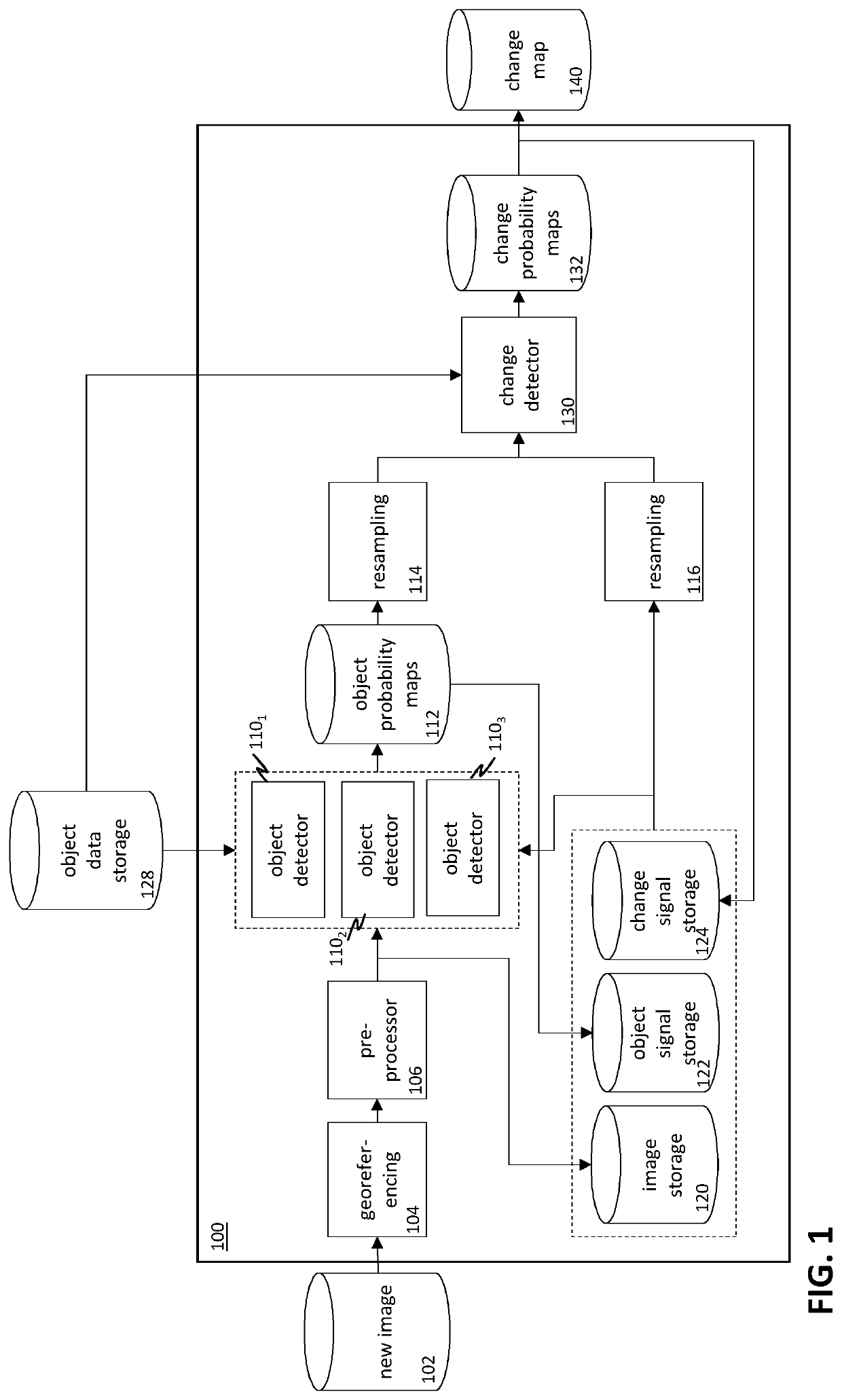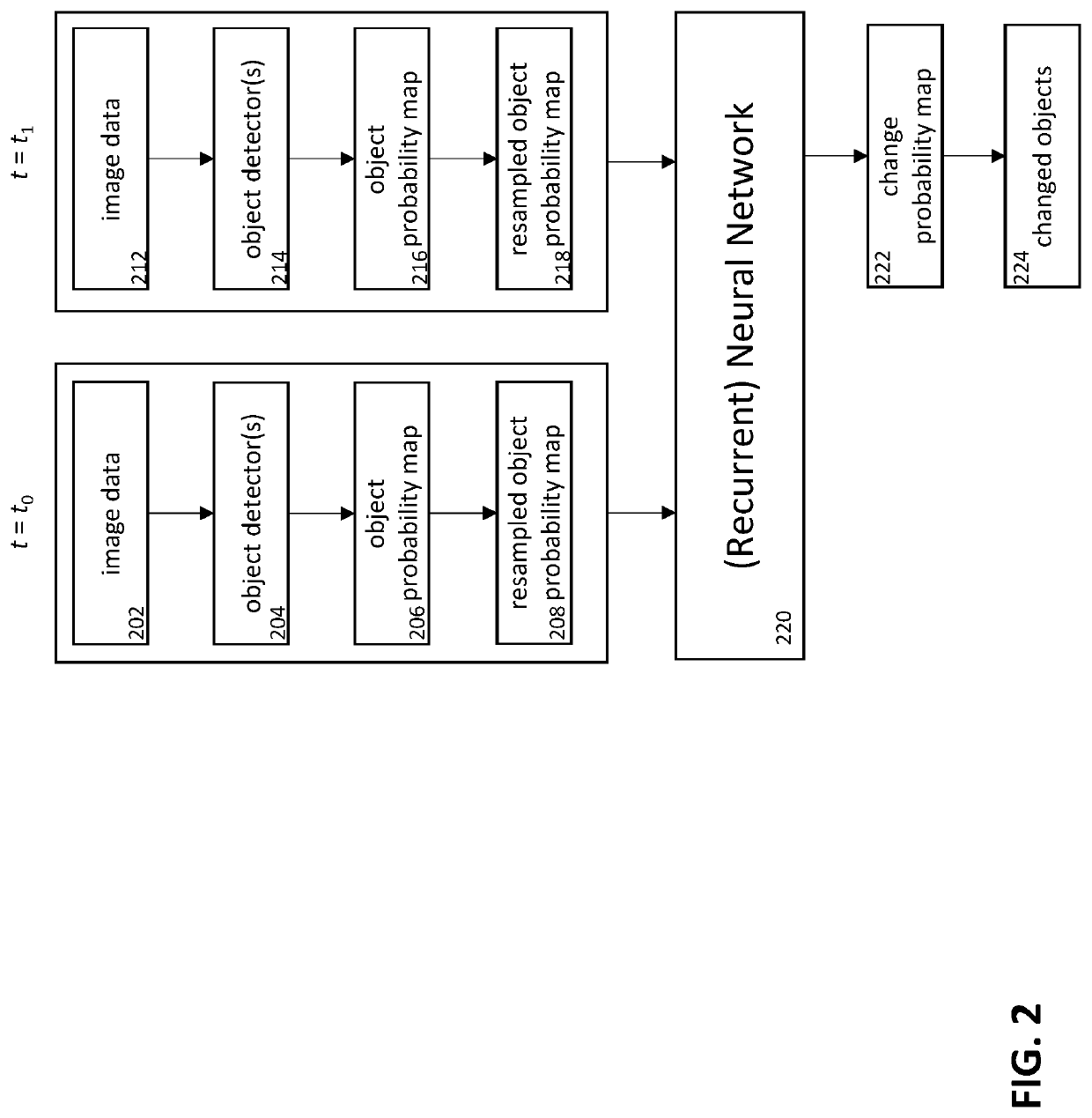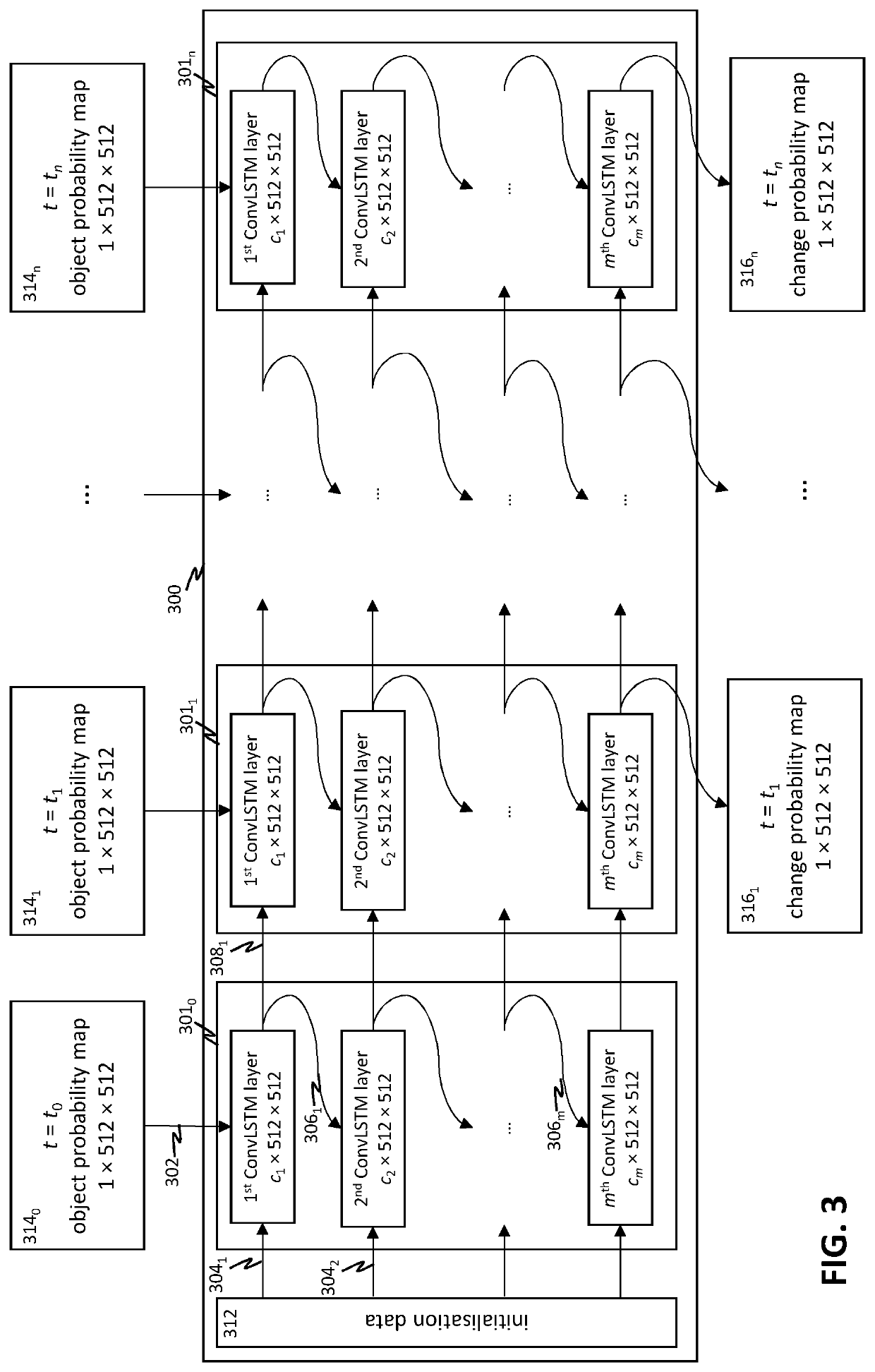Object-based change detection using a neural network
a neural network and object-based technology, applied in scene recognition, instruments, computing, etc., can solve the problems of unneeded reactions, high number of false positive change detections, and cloud may be considered nois
- Summary
- Abstract
- Description
- Claims
- Application Information
AI Technical Summary
Benefits of technology
Problems solved by technology
Method used
Image
Examples
Embodiment Construction
[0056]In this disclosure embodiments are described of methods and systems to determine a change in an object or class of objects based on image data, preferably remote sensing data. The methods and systems will be described hereunder in more detail. An objective of the embodiments described in this disclosure is to determine changes in pre-determined objects or classes of objects in a geographical region.
[0057]FIG. 1 schematically depicts a system for reliable object-based change detection in remote sensing data according to an embodiment of the invention. When a new image 102, typically an aerial image or satellite image, is received by the image processing and storage system 100, the image may be georeferenced 104, i.e. the internal coordinates of the image may be related to a ground system of geographic coordinates. Georeferencing may be performed based on image metadata, information obtained from external providers such as Web Feature Service, and / or matching to images with know...
PUM
 Login to View More
Login to View More Abstract
Description
Claims
Application Information
 Login to View More
Login to View More - R&D
- Intellectual Property
- Life Sciences
- Materials
- Tech Scout
- Unparalleled Data Quality
- Higher Quality Content
- 60% Fewer Hallucinations
Browse by: Latest US Patents, China's latest patents, Technical Efficacy Thesaurus, Application Domain, Technology Topic, Popular Technical Reports.
© 2025 PatSnap. All rights reserved.Legal|Privacy policy|Modern Slavery Act Transparency Statement|Sitemap|About US| Contact US: help@patsnap.com



